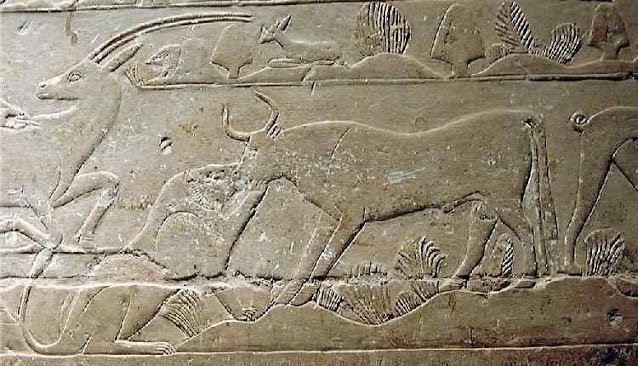Mereruka is followed by his wife, who is displayed at a similar scale. In this chamber, it is only on this wall that he wears sandals on his feet. The couple face north, preceded by groups of three attendants, viewing the hunting scene which completes the larger part of this wall. Only the two lower registers have survived, but this is enough to see that it takes place within a fenced enclosure. On both of the registers dogs are shown attacking antelopes, but in the middle of the lower register a lion is shown attacking a bull
 . A scattering of low vegetation can be seen. A narrow sub-register is inserted at top left of the bottom register, again containing vegetation, but among which are two partially hidden hedgehogs, a small antelope and a hare
. A scattering of low vegetation can be seen. A narrow sub-register is inserted at top left of the bottom register, again containing vegetation, but among which are two partially hidden hedgehogs, a small antelope and a hare

Comments
Post a Comment